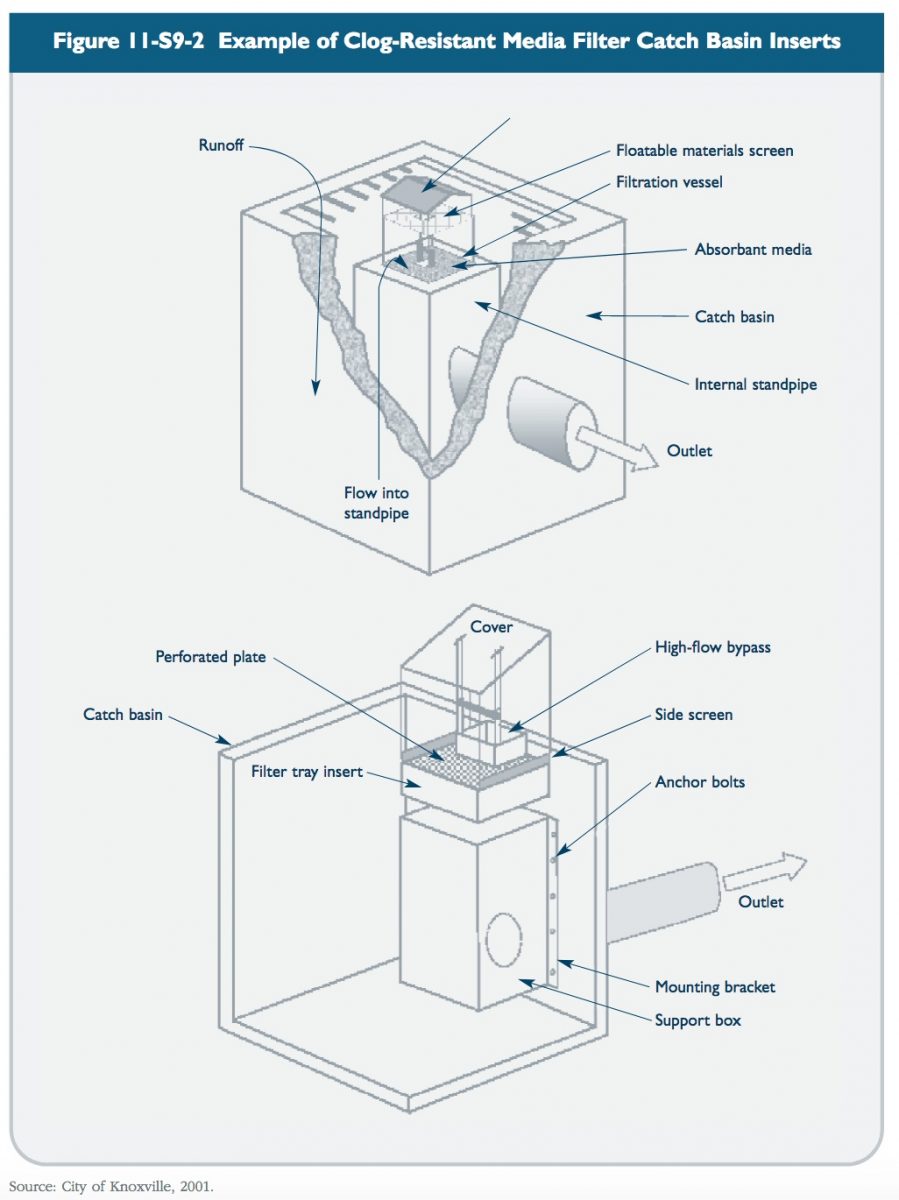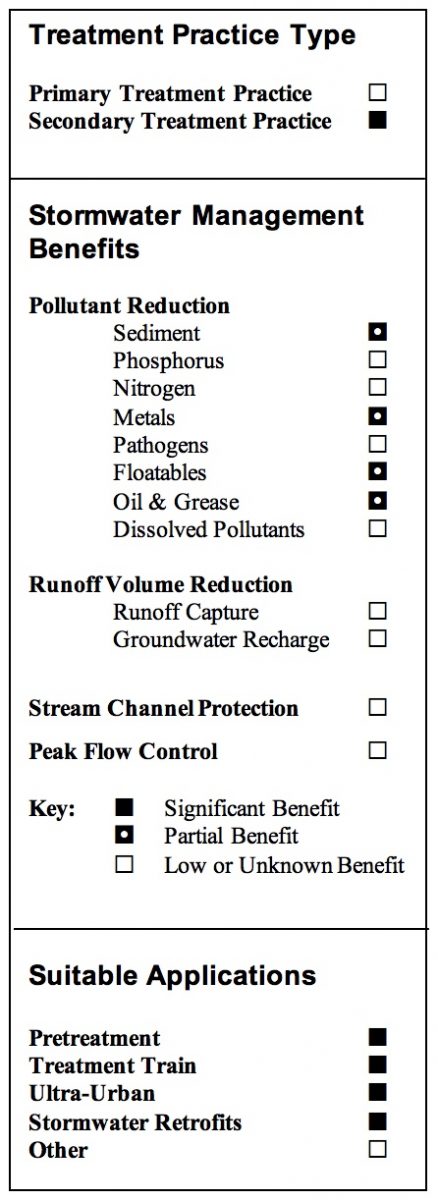Description
Catch basin inserts are a general category of proprietary devices that have been developed in recent years to filter runoff entering a catch basin. Catch basin inserts function similarly to media filters, but on a much smaller scale. Catch basin inserts typically consist of the following components (Washington, 2000):
* A structure (screened box, tray, basket, etc.) which contains a pollutant removal medium
* A means of suspending the structure in a catch basin
* A filter medium such as sand, carbon, fabric, bag,etc.
* A primary inlet and outlet for the stormwater
* A secondary outlet for bypassing flows that exceed design flow.
The two basic varieties of catch basin inserts include filter trays and filter fabric. The tray design consists of a series of trays, with the top tray serving as an initial sediment trap, and the underlying trays composed of media filters. The filter fabric design uses filter fabric as the filter media for pollutant removal. Depending on the insert medium, solids, organics (including oils), and metals can be removed. However, due to their small volume, catch basin inserts have very limited retention times and require frequent cleaning or replacement to be effective. Figures 11-S9-1 and 11-S9-2 illustrate several examples of generic catch basin insert designs.


Reasons for Limited Use
* Limited peer-reviewed performance data available. (See Chapter Six for a description of the recommended evaluation criteria and protocols for consideration of these technologies as primary treatment practices.)
* Require frequent maintenance and replacement. Can become a source of pollutants unless maintained frequently.
* Susceptible to clogging. Can aggravate flooding when clogged.
* Do not provide peak flow attenuation, runoff volume reduction, or groundwater recharge.
Suitable Applications
* To provide pretreatment for other stormwater treatment practices.
* For retrofit of existing conventional catch basins that lack sumps or have undersized sumps.
* May be considered in specialized small drainage applications such as industrial sites for specific target pollutants where clogging of the medium will not be a problem.
* As temporary sediment control devices and pretreatment at construction sites.
* For oil control at small sites where the insert medium has sufficient hydrocarbon loading capacity and rate of removal, and the solids and debris will not prematurely clog the insert.
* Can be used in unpaved areas for inlet protection.
Design Considerations
Due to the proprietary nature of these products, catch basin inserts should be designed according to the manufacturer’s recommendations. Some general design considerations for catch basin inserts include:
* High Flow Bypass: A high flow bypass or other design feature to allow stormwater runoff into the drain system in the event of clogging and runoff in excess of the water quality design flow to bypass the system without danger of local flooding.
* Maintenance: Should be inspected and maintained in accordance with manufacturer’s recommendations. Since catch basin inserts require frequent inspection and maintenance, they should only be used where a full-time maintenance person is on-site.
Plans for catch basin inserts should identify detailed inspection and maintenance requirements, inspection and maintenance schedules, and those parties responsible for maintenance.
* Sediment Disposal: Sediment removed from catch basin inserts should be properly handled and disposed in accordance with local, state, and federal regulations. Before disposal, appropriate chemical analysis of the material should be performed to determine proper methods for storage and disposal.
References
City of Knoxville. 2001. Knoxville BMP Manual, City of Knoxville Engineering Department. Knoxville, Tennessee.
United States Environmental Protection Agency (EPA). 2002. National Menu of Best Management Practices for Stormwater Phase II.
URL: http://www.epa.gov/npdes/menuofbmps/menu.htm, Last Modified January 24, 2002.
Washington State Department of Ecology (Washington). 2000. Stormwater Management Manual for Western Washington, Final Draft. Olympia, Washington.
